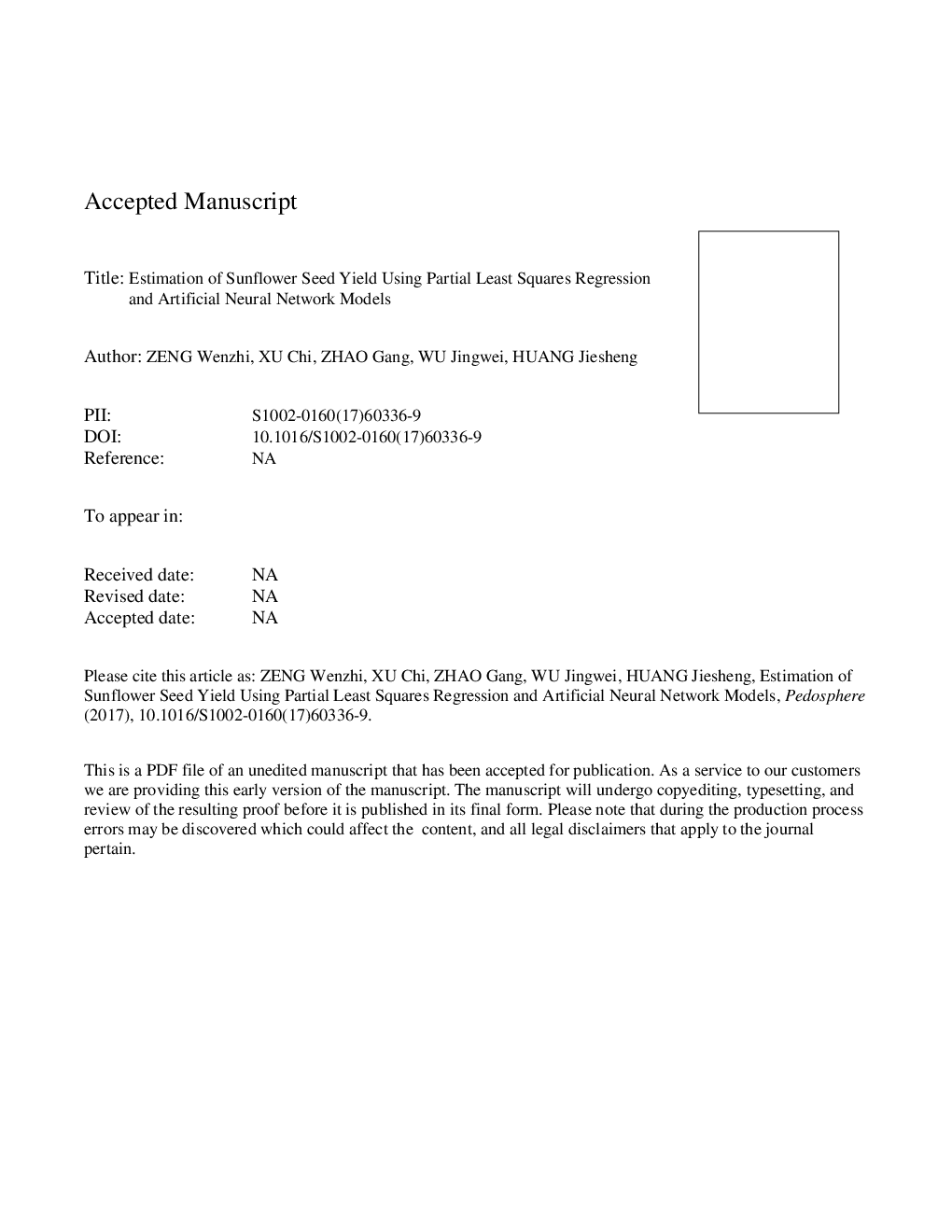| Article ID | Journal | Published Year | Pages | File Type |
|---|---|---|---|---|
| 11012941 | Pedosphere | 2018 | 16 Pages |
Abstract
Statistical models can efficiently establish the relationships between crop growth and environmental conditions while explicitly quantifying uncertainties. This study aimed to test the efficiency of statistical models established using partial least squares regression (PLSR) and artificial neural network (ANN) in predicting seed yields of sunflower (Helianthus annuus). Two-year field trial data on sunflower growth under different salinity levels and nitrogen (N) application rates in the Yichang Experimental Station in Hetao Irrigation District, Inner Mongolia, China, were used to calibrate and validate the statistical models. The variable importance in projection score was calculated in order to select the sensitive crop indices for seed yield prediction. We found that when the most sensitive indices were used as inputs for seed yield estimation, the PLSR could attain a comparable accuracy (root mean square error (RMSE) = 0.93 t haâ1, coefficient of determination (R2) = 0.69) to that when using all measured indices (RMSE = 0.81 t haâ1, R2 = 0.77). The ANN model outperformed the PLSR for yield prediction with different combinations of inputs of both microplots and field data. The results indicated that sunflower seed yield could be reasonably estimated by using a small number of crop characteristic indices under complex environmental conditions and management options (e.g., saline soils and N application). Since leaf area index and plant height were found to be the most sensitive crop indices for sunflower seed yield prediction, remotely sensed data and the ANN model may be joined for regional crop yield simulation.
Related Topics
Life Sciences
Agricultural and Biological Sciences
Soil Science
Authors
Wenzhi ZENG, Chi XU, ZHAO Gang, Jingwei WU, Jiesheng HUANG,
